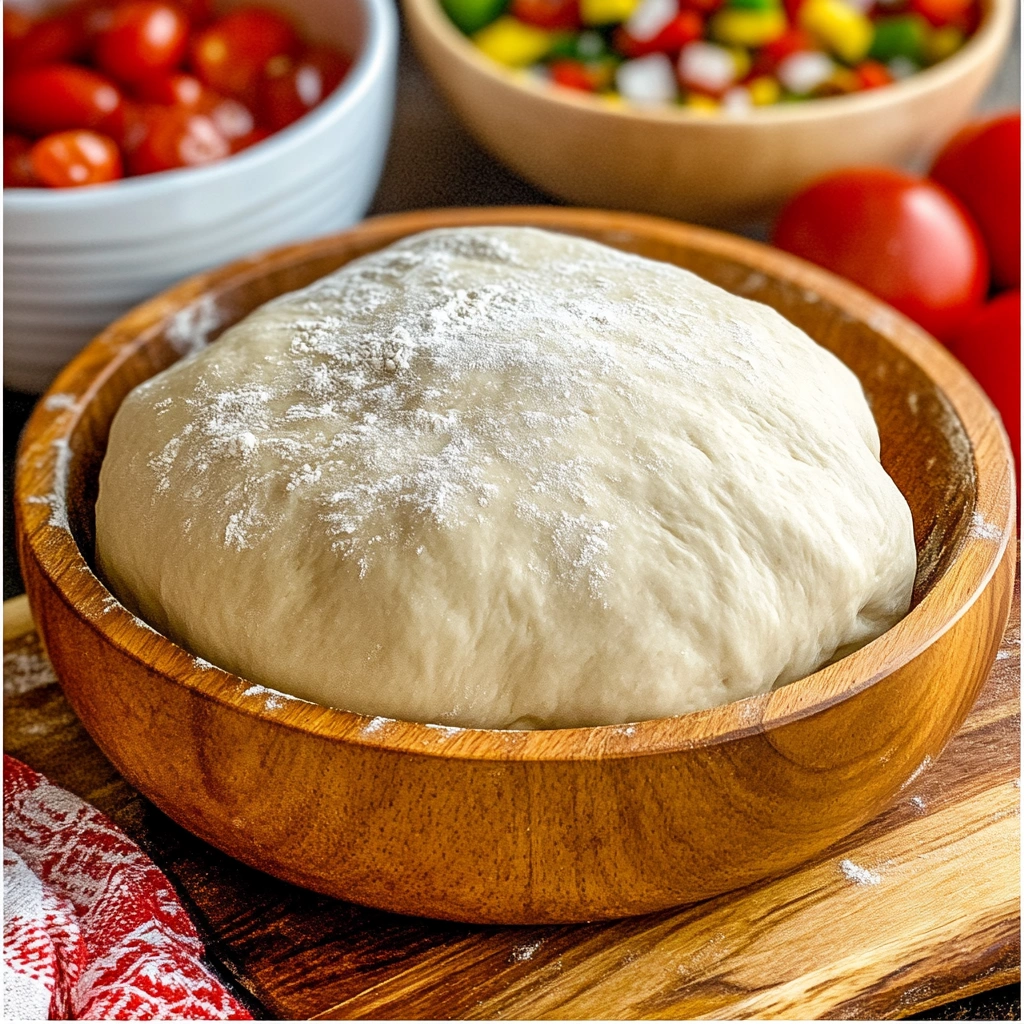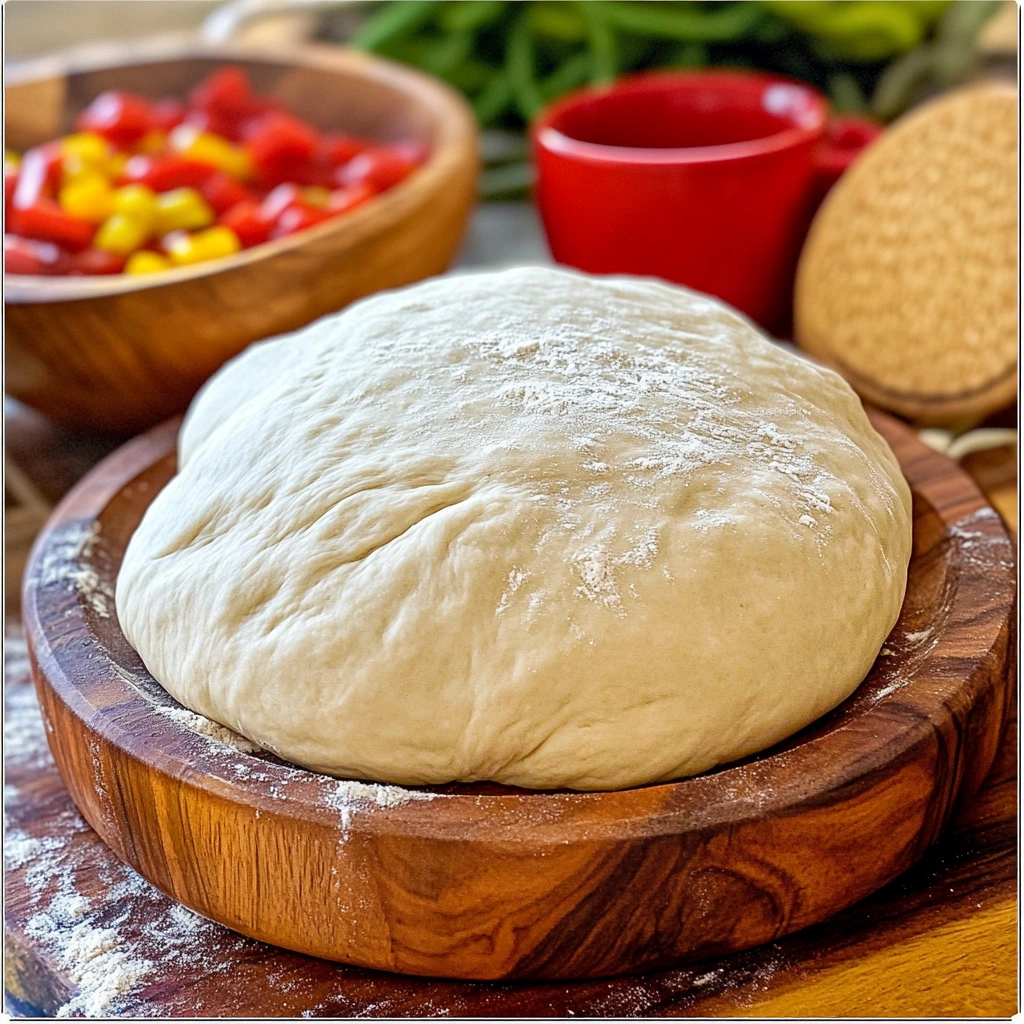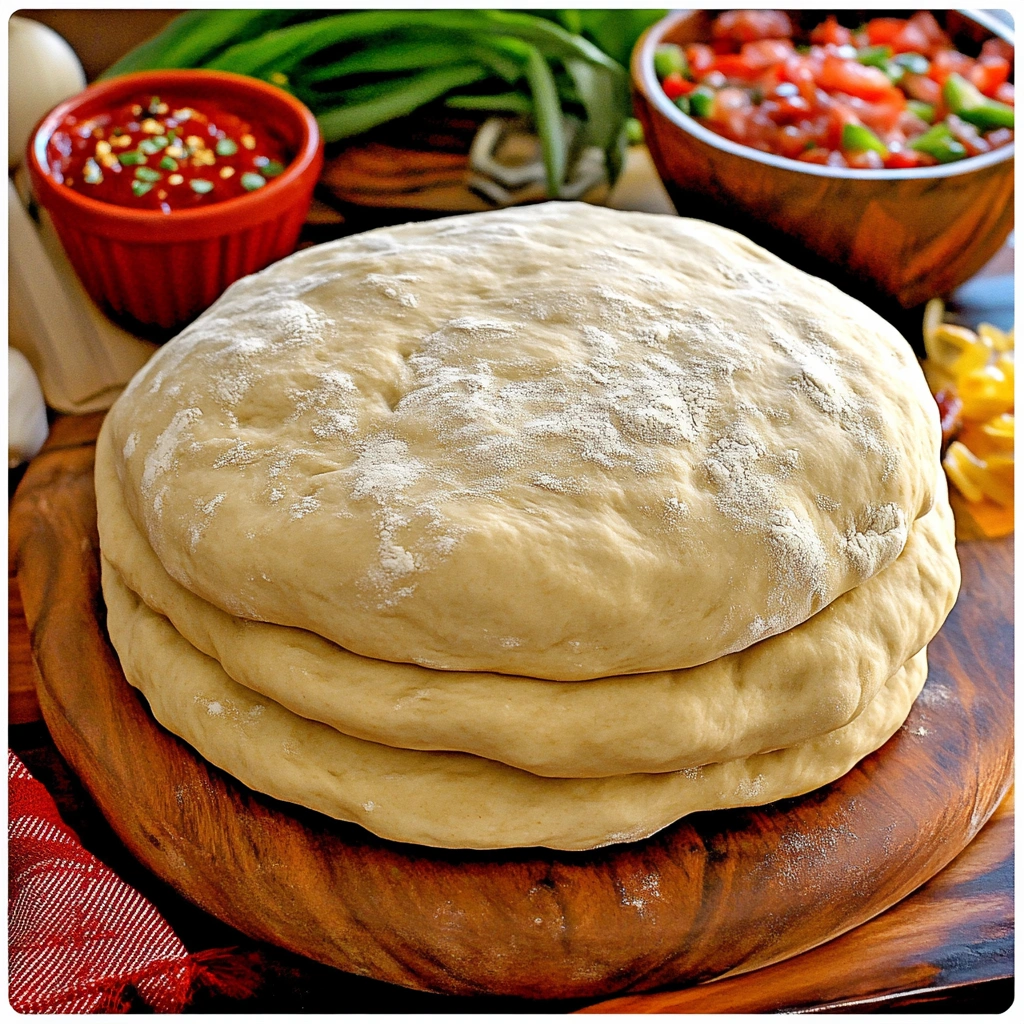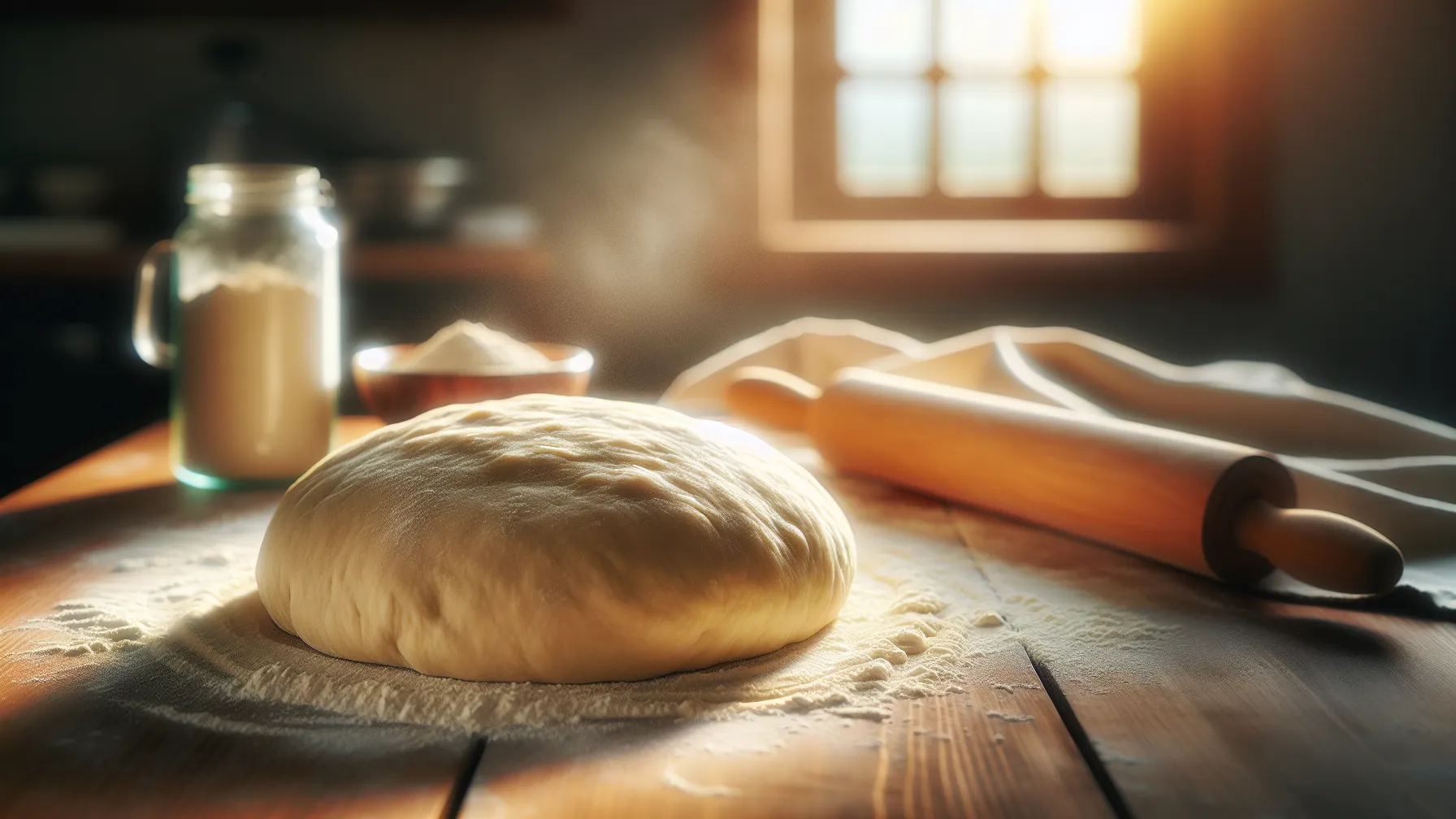Homemade pizza dough is a game-changer. The rich aroma of freshly baked crust and its perfect texture are incomparable. Store-bought dough often lacks the flavor and authenticity that homemade dough provides. When you make it yourself, you have full control over the ingredients and can create the ideal crust for any pizza style.
Whether you like your pizza with a crispy thin base or a soft, fluffy crust, understanding the fundamentals is crucial. The dough’s texture and taste depend on the right ingredients, kneading, and fermentation process. In this guide, you’ll learn the essential tips for making the perfect dough at home.
1. Understanding Homemade Pizza Dough Ingredients
Every ingredient in your pizza dough serves a specific purpose. Flour is the base that provides structure and texture. Yeast helps the dough rise by creating air pockets, while water hydrates the flour and activates gluten. Salt strengthens the dough, while also improving flavor.
Sugar feeds the yeast, encouraging it to ferment, while also helping with browning the crust. Olive oil adds richness and elasticity to the dough, giving it that soft, pillowy texture. Using the right balance of these ingredients is key to a perfect pizza dough that rises beautifully and has the ideal texture.

2. Choosing the Right Flour
Flour is the most important ingredient in pizza dough. Choosing the right one will determine the texture of your pizza’s crust. All-purpose flour is a popular option for many pizza makers. It offers a balanced dough that works for most styles of pizza. This type of flour provides a light and tender base that’s easy to shape and stretch.
On the other hand, bread flour has a higher protein content, which results in a chewier and more elastic dough. This makes it ideal for thick, hearty crusts like those found in New York-style pizza. If you’re aiming for a delicate, crispy crust, 00 flour is the best option. Its ultra-fine grind and low protein content are perfect for Neapolitan pizza.
3. The Role of Yeast in Dough
Yeast is essential for making pizza dough rise and develop its airy texture. It releases carbon dioxide as it ferments, which creates bubbles that give the dough its lightness. There are different types of yeast to choose from, each with its specific requirements. Instant yeast is popular because it can be added directly to dry ingredients without needing to be activated in water.
Active dry yeast, on the other hand, requires activation in warm water before mixing it with flour. Fresh yeast is another option, but it has a shorter shelf life and must be kept refrigerated. Yeast fermentation is the secret behind the flavor and texture of your dough. Longer fermentation times will produce more flavorful results, so patience is key to getting the best dough.
4. Essential Tools for Perfect Dough
Having the right tools makes all the difference in dough preparation. You don’t need specialized equipment, but a few essentials will help you along the way. A large mixing bowl and measuring cups ensure accuracy when adding your ingredients. A whisk or a wooden spoon is great for mixing, especially in the initial stages when you’re incorporating the flour and liquids.
When it comes to kneading and shaping the dough, a dough scraper will make your life easier. It helps you manage sticky dough and keeps your hands clean. If you prefer to roll out the dough, a rolling pin works well. To bake the dough evenly, a pizza stone or baking sheet is crucial. These tools help you achieve a perfectly baked crust with an even texture.
5. Step-by-Step Homemade Pizza Dough Recipe
Now that you understand the ingredients and tools, it’s time to dive into making your own homemade pizza dough. Follow this step-by-step guide to achieve a delicious, perfectly risen dough.
Step 1: Mix the Ingredients
Start by combining your dry ingredients—flour, salt, and yeast—into a large mixing bowl. Stir them together to ensure even distribution. If you’re using instant yeast, there’s no need to activate it in water first. However, if you’re using active dry yeast, dissolve it in warm water along with a pinch of sugar to activate it. Let it sit for about 5 minutes until it becomes foamy.
Next, add the olive oil to the yeast mixture and stir. Then, gradually pour the wet mixture into the dry ingredients, mixing as you go. You should have a dough that begins to come together but is still a bit sticky.
Step 2: Knead the Dough
Flour your work surface lightly and begin kneading the dough by hand. Push down and away from you, then fold the dough back over itself. Turn the dough a quarter turn each time, so it gets worked evenly. Kneading helps develop the gluten in the dough, creating the elastic texture you want for your pizza crust. Knead for about 8 to 10 minutes, or until the dough is smooth and elastic.
Step 3: Let the Dough Rise
Once your dough has been kneaded, form it into a ball and place it into a lightly oiled bowl. Cover it with a damp cloth or plastic wrap. Now, let the dough rise for about 1 to 1.5 hours, or until it has doubled in size. This process is crucial for developing flavor and texture.
If you prefer a slower fermentation process, you can refrigerate the dough for 12 to 24 hours. The extended rise allows the yeast to develop more flavor, creating a dough that’s more complex and flavorful.

Step 4: Shape the Dough
Once your dough has risen, punch it down gently to release any air bubbles. Turn it out onto a lightly floured surface. Begin stretching the dough by hand, pressing it outwards into your desired shape. You can use a rolling pin if you prefer a thinner crust, but many people enjoy stretching the dough by hand for a more traditional texture. If you’re making multiple pizzas, divide the dough into smaller portions.
Step 5: Preheat the Oven
While you’re shaping the dough, preheat your oven to the highest possible temperature (usually around 475°F to 500°F). If you have a pizza stone, place it in the oven to heat up. The stone absorbs and distributes heat evenly, giving your pizza a crispy crust. A hot oven ensures that the dough bakes quickly and evenly, creating the perfect crust texture.
6. Tips for Perfect Homemade Pizza Dough
Achieving the perfect pizza dough is all about practice, patience, and attention to detail. Here are some helpful tips to ensure your dough turns out perfectly every time.
Use the Right Temperature for Water
As mentioned earlier, the temperature of the water is important when activating yeast. Too cold, and the yeast won’t activate; too hot, and it could kill the yeast. Aim for a water temperature between 100°F and 110°F. This is warm enough to activate the yeast but not so hot that it harms it.
Give Your Dough Time to Rise
Don’t rush the dough rising process. While 1 to 1.5 hours is typically enough for a quick rise, longer fermentation times will produce better results. If you have time, let the dough rise slowly in the refrigerator overnight. The cold rise enhances the dough’s flavor and texture, giving you a more flavorful crust.
Don’t Overwork the Dough
While kneading is important for developing gluten, overworking the dough can make it tough. Once the dough is smooth and elastic, stop kneading. Overworking the dough can result in a dense crust, so be gentle when handling it.
Use a Pizza Stone for the Best Results
A pizza stone can take your homemade pizza to the next level. It mimics the effects of a brick oven by absorbing moisture and evenly distributing heat. If you don’t have a stone, a baking sheet will work, but the results may not be as crispy. For the best results, preheat the stone in the oven for at least 30 minutes before baking your pizza.

7. The Best Pizza Dough for Different Styles
The type of pizza dough you use can greatly affect the outcome of your pizza. Different styles of pizza call for different types of dough. Let’s look at how you can customize your dough for different pizza styles.
Thin Crust Pizza Dough
Thin crust pizza is known for its crispy, cracker-like texture. To make the perfect thin crust dough, use a high-protein flour like bread flour. You can also add a little olive oil to the dough to help it crisp up in the oven. When shaping the dough, make sure to roll it out as thin as possible without tearing it. The thinner the dough, the crispier the crust will be.
Thick Crust Pizza Dough
Thick crust pizza, such as pan pizza or Sicilian-style pizza, requires a dough that’s a little more substantial. For this, you’ll want to use a dough that has more hydration (more water) to create a fluffier, softer texture. The dough should rise in a deep dish or a pizza pan to give it the right thickness. You can also add a little more yeast to get a better rise.
Neapolitan Pizza Dough
Neapolitan-style pizza dough is known for its thin, airy crust. The dough should be soft, light, and chewy. Use 00 flour to achieve the best results for this style of pizza. It’s important to let the dough rise slowly, ideally in the refrigerator for 12 to 24 hours. Neapolitan pizzas are typically baked in very high-temperature ovens, often around 800°F, to achieve the perfect texture in just a couple of minutes.
Gluten-Free Pizza Dough
If you need a gluten-free option, you can make pizza dough using a gluten-free flour blend. These blends often contain rice flour, potato starch, and other ingredients to replace wheat flour. You may need to adjust the amount of liquid, as gluten-free dough tends to be more fragile. For a crispier crust, you can add a little cornstarch to the dough. Just keep in mind that gluten-free pizza dough can have a different texture than traditional dough.
8. Common Mistakes to Avoid
While making homemade pizza dough can seem straightforward, there are a few common mistakes to watch out for. By avoiding these mistakes, you can ensure that your dough turns out perfect every time.
Using the Wrong Yeast
Not all yeast is the same. Active dry yeast and instant yeast are different, and using the wrong type can affect how your dough rises. Always check your recipe and ensure you’re using the type of yeast it calls for. Instant yeast is the easiest option for beginners since it doesn’t need activation. However, if you prefer active dry yeast, make sure to proof it in warm water first.
Not Kneading Enough
Kneading is essential for developing the gluten in the dough. If you don’t knead the dough enough, it will be dense and hard to stretch. On the other hand, over-kneading can result in a tough dough. Knead until the dough becomes smooth and elastic, then stop.
Not Giving the Dough Enough Time to Rise
Rushing the rising process is a mistake many home bakers make. The dough needs time to rise properly so that the yeast can work its magic. If you don’t give the dough enough time, it will be flat and lack flavor. Patience is key to achieving the best results.

9. How to Store Pizza Dough
If you’ve made more dough than you can use in one sitting, don’t worry! Storing pizza dough is easy and can save you time for future pizza nights. Here’s how you can store your dough properly.
Refrigeration
The best way to store pizza dough is by refrigerating it. After kneading and letting it rise, punch it down gently to release any air. Then, form the dough into a ball and coat it lightly with olive oil to prevent it from drying out. Place the dough in an airtight container or wrap it tightly with plastic wrap. It will last in the fridge for up to 3 days.
Freezing
If you need to store the dough for a longer period, freezing is an excellent option. After the dough has risen, punch it down and divide it into individual portions (this makes it easier to use later). Wrap each portion tightly in plastic wrap and then place it in a resealable freezer bag. The dough can be frozen for up to 3 months. When you’re ready to use it, let it thaw overnight in the fridge and allow it to come to room temperature before using.
10. How to Use Leftover Pizza Dough
Leftover pizza dough can be repurposed into many delicious treats, ensuring nothing goes to waste. Here are a few creative ways to use up your extra dough.
Garlic Knots
Transform your pizza dough into garlic knots by rolling small pieces of dough into balls, tying them into knots, and baking them with a garlic butter glaze. These make an excellent side dish or appetizer.
Cinnamon Rolls
For a sweet treat, roll out your pizza dough into a rectangle, sprinkle with cinnamon and sugar, and then roll it up. Slice it into individual pieces, bake, and enjoy delicious homemade cinnamon rolls.
Flatbreads
Roll out small portions of dough and cook them on a hot griddle or skillet to make soft, fluffy flatbreads. You can serve these with dips or use them as wraps.
Mini Calzones
Take portions of the dough and fill them with your favorite pizza toppings (cheese, meats, veggies). Fold the dough over the filling and bake for a delicious mini calzone.
11. Troubleshooting Common Pizza Dough Issues
Even experienced bakers can encounter problems when making pizza dough. Here are some common issues and how to troubleshoot them.
Dough is Too Sticky
If your dough is too sticky and hard to work with, add a little more flour. Sprinkle small amounts of flour over the dough while kneading until it reaches the right consistency. Just be careful not to add too much flour, as it can make the dough dry and tough.
Dough Won’t Rise
If your dough isn’t rising, it could be due to old or expired yeast, incorrect water temperature, or not enough warmth. Make sure your yeast is fresh and that the water temperature is just right (between 100°F and 110°F). If you’re in a cold environment, try placing the dough in a warm spot, like an oven with the light on.
Dough is Too Hard or Tough
Tough dough is usually a result of overworking it or adding too much flour. Ensure you’re kneading the dough just enough to develop the gluten without overdoing it. Also, make sure the dough has enough hydration (water content) for a soft texture.
Dough Sticks to the Pizza Peel or Baking Surface
If you’re using a pizza peel to transfer your pizza to the oven, dust it lightly with flour or cornmeal. This prevents the dough from sticking to the peel. Alternatively, if you’re using a baking sheet, you can line it with parchment paper to avoid sticking.
12. How to Achieve the Perfect Pizza Crust
The crust is the most important part of a pizza, and achieving the perfect texture requires a few key steps. Here’s how you can make sure your crust is always perfect.
Use a Hot Oven
The hotter the oven, the better the crust. Preheat your oven to the highest temperature it can handle (usually around 475°F to 500°F). This allows the pizza to bake quickly, giving you a crispy crust while keeping the toppings fresh.
Avoid Overloading with Toppings
Too many toppings can make the crust soggy. Keep it simple with a few key ingredients, and be sure to use fresh toppings. If you’re using wet ingredients like tomato sauce, be sure to spread them evenly and not too thickly.
Don’t Skip the Oil
Brushing your pizza crust with olive oil before baking adds flavor and helps it become golden and crispy. You can even brush a bit more oil on the crust’s edges for that signature pizza crust crunch.
Use a Pizza Stone or Steel
A pizza stone or pizza steel is a must for achieving the perfect pizza crust. It absorbs and distributes heat evenly, giving your crust a crispy, well-cooked bottom. Make sure to preheat the stone in the oven for at least 30 minutes before baking the pizza.
13. Conclusion: Why Homemade Pizza Dough is Worth the Effort
Making homemade pizza dough is a rewarding process that results in the best pizza you’ve ever had. The texture and flavor of freshly made dough are incomparable to store-bought versions, and the ability to customize it to your liking makes the experience even more enjoyable.
Not only does making your own dough give you complete control over the ingredients, but it also offers a fun and creative way to spend time in the kitchen. Whether you’re a beginner or a seasoned cook, homemade pizza dough is a skill that’s easy to learn and impossible to forget.
For more informations about this topic, visit this website.

